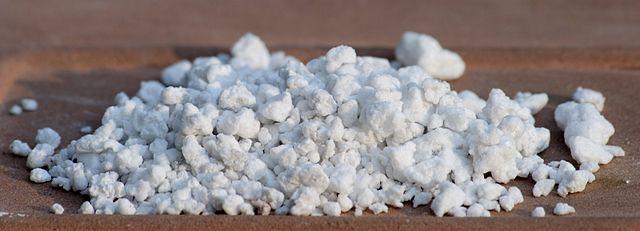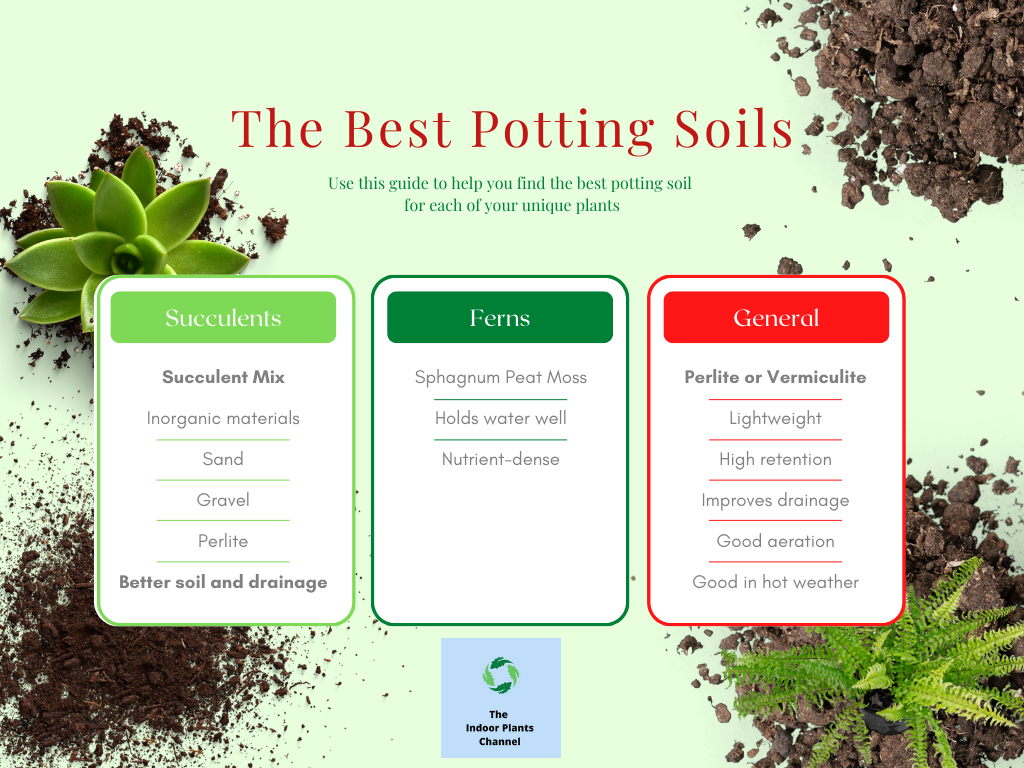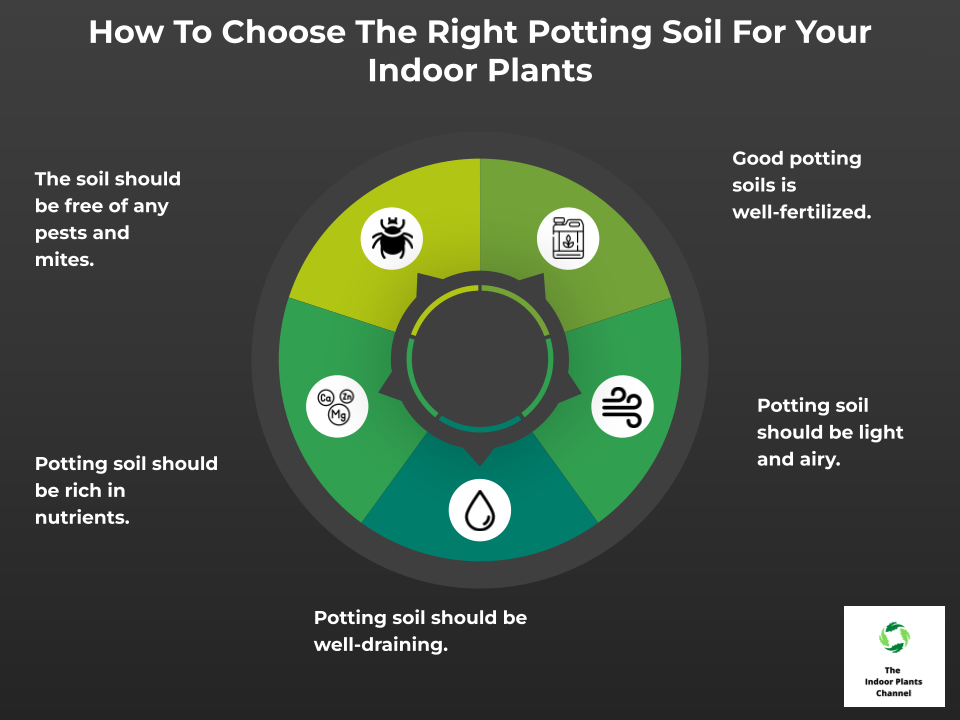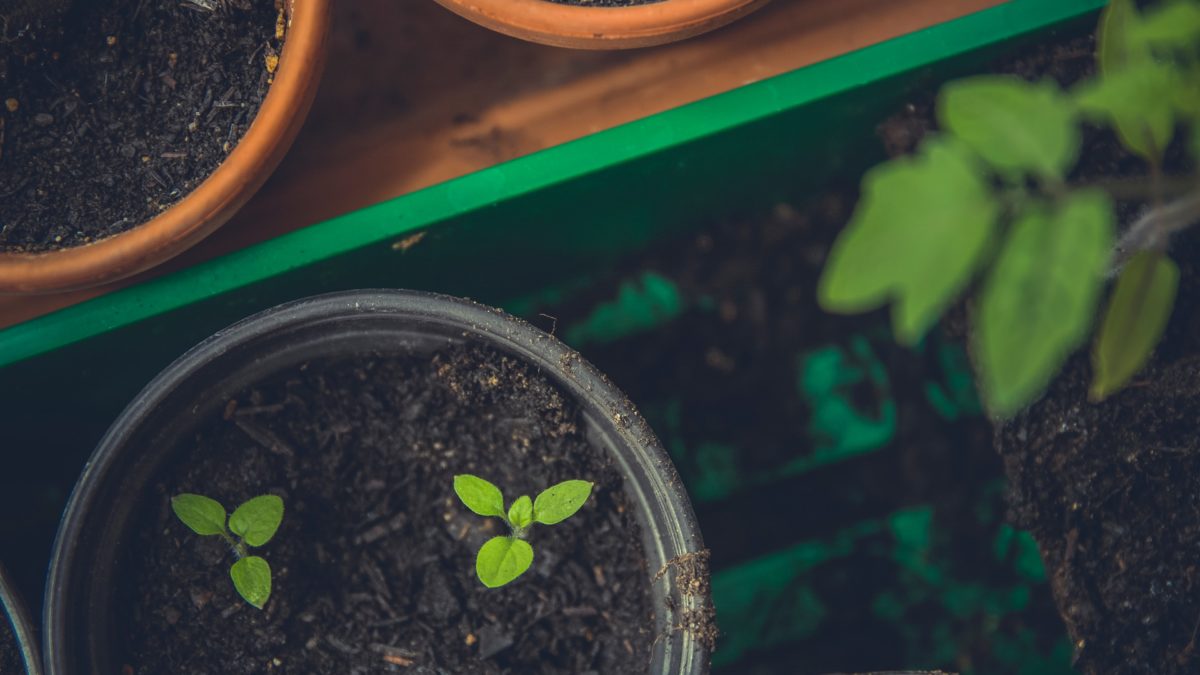If you’re looking for the best potting soil for your indoor plants, look no further! In this blog post, we’ll tell you everything you need to know in order to choose the perfect soil for your plants.
The best way to find out what kind of potting soil your indoor plants need is to ask the nursery where you bought the plants.
If you want to keep your indoor plants healthy and thriving, you need to choose the right potting soil. But with all the different types of potting soil on the market, how do you know which one is best for your plants?

Perlite, an inorganic material, helps soil in water retention
What Is The Best Potting Soil For Indoor Plants?
There are a lot of different potting soils on the market, and it can be tough to decide which one is best for your indoor plants. Here are a few things to keep in mind when choosing a potting soil:
The first thing to consider is what type of plant you are potting. Different plants have different soil needs. For example, cacti and succulents need a very well-draining soil, while ferns prefer a soil that is more moisture-retentive.
Another important factor to consider is the porosity of the soil. A good potting soil should be able to hold onto some water while still allowing excess water to drain away. If a soil is too dense, it will stay waterlogged and can cause root rot. If it is too light, it will dry out too quickly and your plants will suffer.
The third factor to consider is the fertility of the soil. This is important because you want your plant to have enough nutrients to grow. A good way to test the fertility of a soil is to put a small amount in a pot and add water. If the water turns brown, the soil is not fertile.
You also want to make sure that the soil you choose is free of pests and diseases. This is especially important if you are potting plants that are susceptible to problems like root rot.
One final thing to keep in mind is that indoor plants generally do not need as much fertilizer as outdoor plants. A good potting soil should have a slow-release fertilizer added to it to help keep your plants healthy.
With all of these factors in mind, here are a few of the best potting soils for indoor plants:
For cacti and succulents, try a cactus mix or a succulent mix. Cactus mix and succulent mix are both made up of inorganic materials, such as sand, gravel, and perlite. These materials help to aerate the soil and improve drainage. Cactus mix may also contain small amounts of organic matter, such as composted bark or coco coir.
For ferns, try a potting mix that contains sphagnum peat moss. Sphagnum peat moss is a type of moss that is commonly used as a soil amendment or as a potting soil on its own. Peat moss is an excellent source of both water and nutrients for potted plants. Peat moss is also able to hold onto water very well, which helps to keep potted plants from drying out.
For general purpose potting, try a potting mix that contains perlite or vermiculite. Perlite and vermiculite are two materials that are often used in potting soil mixes. They are both lightweight and have a high water-retention capacity. Perlite is made from volcanic glass and has a spongy texture. Vermiculite is made from mica and has a crumbly texture.These materials help to improve the drainage and aeration of the soil mix, while still retaining moisture. They can also help to keep the roots of the plants cooler in hot weather.
No matter which potting soil you choose, be sure to read the label carefully to make sure it meets the needs of your particular plants.

What Are The Different Types Of Potting Soil?
There are four main types of potting soil: sand, loam, clay, and peat.
Each type of soil has different characteristics that make it better suited for certain types of plants.
Sand is the largest type of soil particle. It has good drainage and aeration, but it doesn’t hold nutrients well. Loam is a mix of sand, clay, and organic matter. It has good drainage and aeration, and it holds nutrients well. Clay is the smallest type of soil particle. It has poor drainage and aeration, but it holds nutrients well. Peat is made up of decomposed organic matter. It has good drainage and aeration, but it doesn’t hold nutrients well.
Which type of potting soil you use will depend on the plant you’re growing. If you’re not sure, ask a nursery or gardening store for advice.
What Are The Benefits Of Using Potting Soil?
Potting soil is a type of soil that is specifically designed for growing plants in containers. It is important to use potting soil instead of garden soil or other types of soil because potting soil is light and airy, which helps the roots of plants to breathe and prevents them from becoming waterlogged. In addition, potting soil contains nutrients that plants need in order to grow healthy and strong.
There are many benefits to using potting soil, including the following:
1. Potting soil helps to prevent roots from becoming waterlogged.
2. Potting soil is light and airy, which helps roots to breathe.
3. Potting soil contains nutrients that plants need to grow healthy and strong.
4. Potting soil is easy to find and relatively inexpensive.
If you are planning on growing plants in containers, be sure to use potting soil in order to give your plants the best chance of success.

Tips For Using Potting Soil For Indoor Plants
1. Pick the right potting mix: Not all potting mixes are created equal. Some are better suited for certain plants than others. Do your research or ask a nursery professional to find the best potting mix for your indoor plants.
2. Be sure to aerate the potting mix: Aerating the potting mix helps to ensure that the roots of your plants can breathe and that the mix does not become too compacted. You can do this by mixing in some perlite or sand.
3. Water regularly: Indoor plants need to be watered regularly, especially if they are in a pot with drainage holes. Be sure to check the soil before watering to make sure that it is dry.
4. Fertilize regularly: Indoor plants need to be fertilized regularly in order to stay healthy. You can use a liquid fertilizer or a slow-release fertilizer.
5. Repot when necessary: Indoor plants will eventually outgrow their pots. When this happens, it is time to repot them into a larger pot. Be sure to use a pot that is only slightly larger than the current one.
According to a study by the University of Minnesota, the best potting soil for indoor plants is a mixture of one part peat moss, one part perlite, and one part vermiculite. This mixture provides the perfect balance of drainage and moisture retention for most plants.
Conclusion
After doing some research and trial and error, we’ve come to the conclusion that the best potting soil for indoor plants is a mix of 1 part peat moss, 1 part perlite, and 1 part vermiculite. This mix provides the perfect balance of drainage and moisture retention, and your plants will thrive!
Michelle Wilde
Related posts
4 Comments
Leave a Reply Cancel reply
![]()
About Michelle Wilde
Michelle Wilde is a stay-at-home mom and avid plant lover. Armed with a post-graduate degree in Computer Science (no kidding!), she loves researching plants and landscapes. When she is not caring for her 4 kids, she spends time on her passion for plants. She blogs at www.indoorplantschannel.com, the trusted source for indoor plants.
Learn more
Subscribe
* You will receive the latest posts and updates about indoor plants!
Search
Recent Posts
Categories
- Beginner Guides (10)
- FAQ (206)
- General (2)
- How-To Guides (212)
- Indoor Plants (214)
- Pest Management (2)
- Plant Problem Solutions (4)
- Seasonal Growing (2)
- Specialized Environments (2)
- Specific Plant Care (3)
- Technical Growing (2)

[…] Looking to keep your houseplants healthy and vibrant? Then you need to make sure you’re using the best potting mix! […]
[…] best indoor plants that require little water and maintenance are succulents. Succulents are a type of plant that store […]
[…] good-quality potting mix should do the […]
[…] way to use indoor plant soil is to mix it with perlite. It helps to improve drainage and aeration, which are important for […]